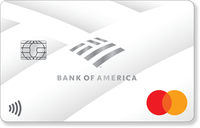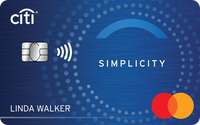What is penalty APR and how do you avoid it?

Key takeaways
- Penalty APRs are significantly higher interest rates that issuers can apply to your credit card balance if you fail to make payments on time or violate the card’s terms.
- You can avoid penalty APRs with responsible card practices, but there are ways to lessen your debt or return to your standard APR should you face a penalty APR.
- Some credit cards do not have penalty APRs, making them good options for those who are worried about triggering this higher interest rate.
You’re probably familiar with credit card annual percentage rates (APRs), which determine the interest charged on purchases and other card activity like balance transfers and cash advances. A penalty APR, however, is a bit different from the others. It’s a significantly higher “punishment” APR that kicks in if you fail to pay your bill on time, have a payment returned for insufficient funds or otherwise violate your card’s terms.
Penalty APRs are expensive and may take months to revert to the original rates. Fortunately, there are ways to avoid them in the first place. Here’s everything you need to know about penalty APRs so that you can keep them from triggering on your account.
How do penalty APRs work?
A credit card issuer can apply a penalty APR when you make late payments, your payment is returned because of insufficient funds or a closed account, or you exceed your credit limit. That penalty APR will replace your regular APR and will likely be much higher than your existing interest rate.
The good news is that credit card issuers can’t charge a penalty APR arbitrarily. With credit card APRs, it’s important to remember the numbers 21, 45 and 60:
- 21: By law, issuers must give you at least 21 days from when your statement is generated at the end of a billing cycle to your payment due date. In most cases, that period is also an interest-free grace period, but that isn’t mandated by law.
- 45: Federal law requires the issuer to notify you 45 days before applying a penalty APR. The notice should include the penalty rate and the reason for the penalty.
- 60: The penalty APR generally comes into play only after you’ve failed to make a payment for at least 60 days.
Each credit card issuer outlines the specific conditions triggering a penalty APR in your credit card’s terms and conditions document. Look for any penalty interest details in the document’s Schumer box.
Don’t confuse a “0 percent intro APR” offer with “no penalty APR.” The best zero-interest credit cards help you to avoid a card’s regular APR on purchases and/or balance transfers for a limited time, but they won’t help you avoid penalties for late payments unless they are also no-penalty-APR cards.
How long does a penalty APR last?
The penalty APR could last as little as six months, as federal law requires your credit card issuer to review your account once you’ve made six consecutive on-time monthly payments. The easiest way to return to your standard APR is to address the underlying reasons behind the penalty interest being applied in the first place.
Actions that can influence your issuer to reinstate your standard APR include paying off the minimum balance, making on-time payments and staying within your credit card’s limit. Conversely, if you continue to engage in negative behaviors, the penalty APR could remain indefinitely.
Consequences of a penalty APR
The obvious consequence of a penalty APR being applied is the higher — potentially much higher — amount of interest you could accrue. Triggering the penalty APR means you have a balance, and you’ve failed to make at least the minimum payment on time — which means you are likely already accruing interest on that balance.
Once the late payment penalty rate is applied, you’ll be paying even more. A Bankrate survey conducted in June 2024 revealed that 50 percent of credit cardholders carry a balance month to month. So you certainly aren’t alone if you’re among this group. If you do find yourself in this situation, continuing to make at least the minimum payments on time each billing cycle will allow you to avoid triggering the penalty APR that could send your debt even higher.
Does triggering a penalty APR affect your credit?
No, a penalty APR won’t directly impact your credit score. The factors leading to the penalty APR, however, can affect your credit adversely.
Under the FICO scoring model, repeated late payments impact the payment history category. Payment history — including that of credit card accounts — makes up 35 percent of your score, and a record of making late payments can weaken that pillar. Payments returned due to closed accounts and insufficient funds can also influence your payment history — especially if you fail to resolve the issue in a timely manner.
Lastly, depending on your other available credit, carrying a balance that accrues interest on a card could result in a high credit utilization ratio, which accounts for 30 percent of your FICO score.
How is the penalty APR calculated?
The penalty APR is usually a predetermined rate you can find in a card’s terms and conditions. Factors like your credit card balance and your credit score don’t typically determine the penalty APR.
Most credit card issuers limit their penalty APRs, but the limit is often a whopping 29.99 percent. That rate is substantially higher than the average credit card APR, which is currently a bit over 20 percent, and almost certainly a lot higher than your standard APR.
Keep in mind that even if you avoid the penalty rate, late payments can still cost you in other ways. Unless you’re in the midst of a promotional 0 percent APR period, you’ll pay interest on any outstanding balance. If you are taking advantage of a 0 percent period when you miss a payment or otherwise trigger a penalty APR, the card issuer could revoke that promotional rate.
You may also be on the hook for late payment or other fees.
What to do if you’re being charged a penalty APR
Here are some measures you can take to reduce your debt if you’re currently subject to a penalty APR:
- Call the issuer. Be proactive and explain the backstory of missed payments or whatever triggered the penalty APR. This doesn’t guarantee that the penalty APR will be reduced, but it doesn’t hurt to present your side.
- Check your credit card agreement. Be sure to understand how your credit card issuer deals with late payments and how any penalty interest applies to your balance.
- Limit using this credit card and pay off balances as soon as possible. If you’re not able to reverse the penalty APR, you’ll want to keep your balance as low as possible. Make it a priority to pay off that balance as soon as you can. Bankrate’s credit card payoff calculator can help you come up with a repayment plan.
- Get organized. To break the cycle of late or missed payments, check your balances frequently and set reminders for payment dates. Better yet, set up automatic payments of at least the minimum amount due.
- Consider applying for a balance transfer credit card if you can’t pay off the balance. Look for a balance transfer credit card to lessen the burden of carrying debt subject to penalty interest.
How to avoid a penalty APR
Good financial habits are the key to avoiding late payment penalty rates and many other fees. Here are a few habits and tips to consider:
Don’t carry a balance
The best way to avoid a penalty APR is to pay your monthly credit card bill in full and on time. If nothing else, avoid the late payment penalty rate by making a minimum monthly payment by the due date of each billing cycle.
Consider automatic payments
Many credit card issuers offer the option of automatic payments, so you can set a date and put your payments on autopilot. The payments are drawn from your bank account, and you can choose to make a full or minimum payment (although we recommend a full payment if possible).
Just remember to ensure there’s enough in your bank account to cover the payment amount, since insufficient funds can be another trigger for penalty APRs.
Set reminders
If you’d rather not use automatic payments, set reminders for yourself. You can do it yourself by setting up calendar reminders on your phone or computer, or you can set text or email reminders through your issuer. You can also take the old-school approach with a circled date on a calendar or a sticky note on your computer monitor.
Set one due date for all cards
Perhaps contrary to popular belief, not every credit card due date lands on the first of the month. You could have one card with a first-of-the-month due date and another with a tenth-of-the-month due date. It just depends on how your billing cycle is structured.
Luckily, though, many issuers will allow you to set your own due date that will apply to your next and future billing cycles.
If you’re juggling multiple cards, whether that’s the result of accumulating debt or just because you want to take advantage of a variety of bonus categories, it can be helpful to pick one due date that applies to all your cards (especially if you have cards with multiple issuers). This will make it less likely you get due dates mixed up or forget to pay one of your cards on time, potentially leading to a penalty APR.
Choose a card without a penalty APR
As a safeguard, you might want to consider a credit card that doesn’t charge a penalty APR, some of which are listed below. Although some no-penalty-APR cards are comparable to other options, the potential trade-offs could include lower credit limits or fewer rewards.
Best credit cards with no penalty APR
Not all credit cards impose penalty APRs. Here are some of the best credit cards available with no penalty APR:

BankAmericard® credit card
-
The BankAmericard® credit card* doesn’t charge a penalty APR, and it’s especially useful if you have existing credit card debt that you’re looking to transfer to a new card. This card comes with a 0 percent intro APR for 18 billing cycles on both balance transfers made within the first 60 days (balance transfer fee: 3% for 60 days from account opening, then 4%) and on all purchases. That gives you plenty of time to catch up on payments without accruing interest. After that, a 15.24% – 25.24% Variable APR on purchases and balance transfers applies.

Citi Simplicity® Card
-
The Citi Simplicity® Card is another great no-penalty-APR card for balance transfer seekers. It comes with a 0 percent intro APR for 21 months on balance transfers made within the first 4 months, along with a 0 percent intro APR on purchases for 12 months. However, after the intro period ends, the ongoing APR range is on the higher end at 18.24% – 28.99% (Variable).

Discover it® Cash Back
-
If you’re looking for a cash back card with no penalty APR, the Discover it® Cash Back is a solid pick. With this card, you’ll earn 5 percent cash back on up to $1,500 spent each quarter in rotating categories (activation required). After reaching the cap and on other purchases, you’ll earn 1 percent cash back.
The bottom line
A penalty APR isn’t inevitable. Make your credit card payments on time each month to not only avoid a penalty APR, but also to avoid late fees and possible damage to your credit score.
If you’re worried about the possibility of triggering a penalty APR, consider a credit card that doesn’t impose a penalty rate. Although you’ll still be responsible for fees and interest charges, your APR won’t increase as a result of your account activity.
Check out Bankrate’s CardMatch tool to help you find the right card for your personal situation.
*The information about the BankAmericard® credit card has been collected independently by Bankrate.com and was last updated on July 18, 2024. The card details have not been reviewed or approved by the issuer.
Why we ask for feedback Your feedback helps us improve our content and services. It takes less than a minute to complete.
Your responses are anonymous and will only be used for improving our website.
You may also like






